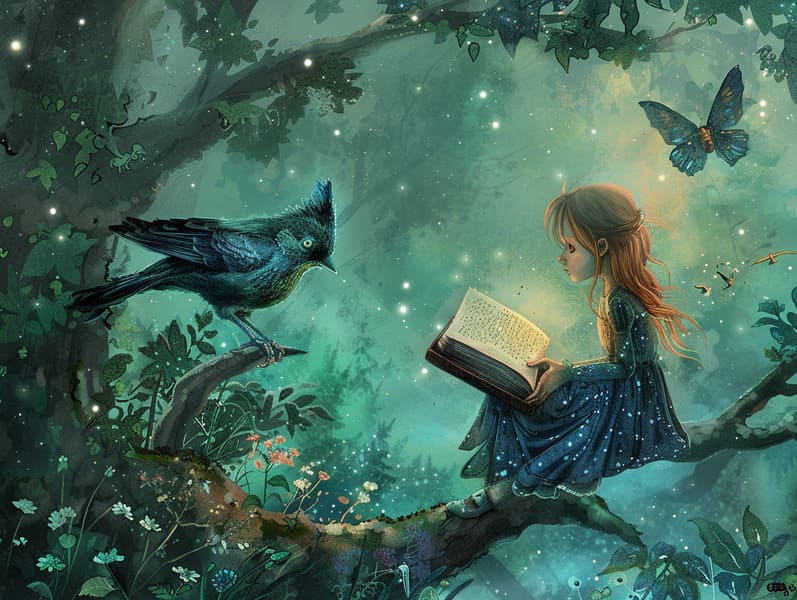Understanding the Legacy of Vintage Fairy Tales with Their Unwavering Enchantment.
Understanding the Legacy of Vintage Fairy Tales with Their Unwavering Enchantment.
Blog Article

Grimm's fairy tales have old origins. These narratives have been passed down from one generation to the next millennia before they were ever documented. They originated from a variety of societies, including African traditions. They were initially told among mature audiences, often carrying themes and messages pertaining to the societal norms and beliefs of the time.
The Grimm brothers, Jacob and Wilhelm Grimm, were among the first to gather many of these beloved narratives. Their compilation, "Grimm's Children's Stories," included narratives like "Ashenputtel," "The Bread Crumb Trail," and "Snow-White and Rose-Red," which have since become hallmarks in the world of classic fairy tales. Similarly, Hans Andersen's magical tales, such as "The Mermaid," and "The Duckling that Could," have floated into hearts worldwide, guaranteeing their place in the pantheon of timeless fairy tales.
Despite their historical roots, these tales remain as significant as ever, especially as nighttime stories for kids. These magical stories are now available in diverse formats, including vividly illustrated books, charming animations, and free fairy tales online.
Their enduring popularity can be attributed to several charming aspects:
Ethical Lessons: Traditional fairy tales often whisper important moral lessons. Narratives like "The Shepherd Boy and the Wolf" teach the significance of truth, while "The Story of the Tortoise and the Hare" show the benefits of determination and unassuming nature. These stories offer little ones clear distinctions between correct and incorrect, shaping their moral compass in a soft yet meaningful way.
Compassion and Knowledge: Fairy tales frequently involve figures facing struggles and tests, prompting readers to connect with their struggles and rally behind their triumphs. For instance, "The Tale of Beauty and the Beast" demonstrates the benefit of looking deeper to acknowledge the real character of a individual, promoting sympathy and comprehension.
Cultural Understanding: Many classic fairy tales are interwoven with the cultural contexts from which they originated. Reading these stories can provide enlightening views into different customs, developing a sense of global insight and appreciation.
Creativity and Fantasy: The magical elements in classic fairy tales—enchanted objects—ignite children’s creative minds. These tales bring readers to fantastical realms, activating creative thinking and a sense of fascination that remains a lifetime.
Ancient fairy tales are not only entrancing but also pedagogical. They act as whimsical tools in enhancing various cognitive and emotional skills in young readers. When fairy tales are spoken out loud, they strengthen linguistic abilities by offering new words and complex sentence structures. This practice also develops auditory skills and attention span, as the young hang on every word, anxious to see what happens next.
Furthermore, exploring the themes and characters of traditional fairy tales can enhance thought processes and logical thinking. Young ones are instructed to discover patterns, anticipate outcomes, and make sense of cause and effect. These debates also support young readers reveal their thoughts and feelings, cultivating their emotional intelligence.
In today’s technological era, the accessibility of digital storybooks has made these narratives more attainable than ever. Online platforms and online apps make available huge assortments of classic fairy tales that can be enjoyed or listened via anytime, anywhere. Fairy tales spoken are particularly prevalent, extending an interactive method for kids to enjoy these fantastical tales. Audiobooks and voiced videos move characters and settings to life, often joined by bewitching background sounds and background music that improve the storytelling experience.
The unending appeal of timeless fairy tales lies in their ability to change to today's society while sustaining their main lessons. Contemporary renditions of these stories often include more different characters and modern settings, making them understandable to today’s audience. However, the underlying themes of fortitude, warmth, and justness remain unchanged, continuing to influence audiences of all ages.
Ancient fairy tales also offer a sense of familiarity and comprehensibility. They bring a well-structured narrative with a transparent beginning, middle, and end, often coming to a close with the resolution of conflicts and the triumph of goodness over badness. This reliability can be placating for the young, extending a sense of steadiness in an fluctuating world.
Old fairy tales continue to bewitch and guide new generations, maintaining their captivation and meaningfulness in modern society. As children's night stories, they give a perfect blend of fascination and comprehension, cultivating moral values, empathy, and creativity. The accessibility of online fairy tales and the widespread nature of fairy tales read aloud assure that these timeless stories remain acquirable to new generations.
By preserving and circulating these narratives, we continue to acknowledge the rich tapestry of legends and cultural heritage. Whether you are exploring a artistically illustrated book, delving into a online library, or hearing an sound book, check it out the fascination of bedtime fairy tales is always within reach. These stories teach us of the unchanging influence of stories and its ability to gather us across centuries and lands.
Even if you are seeing a richly illustrated book, exploring a cyber collection, or listening on an sound book, the grandeur of timeless fairy tales is always within reach.
These tales show us of the ageless influence of storytelling and its ability to hold us together across generations and cultures, forging a link that fascinates and enlightens alike.